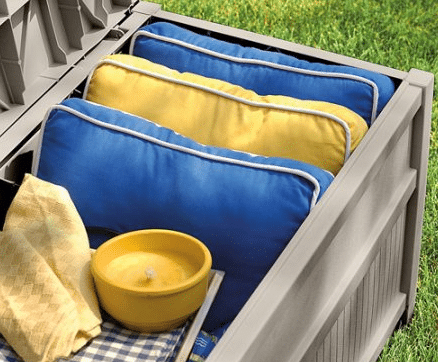Skip to content
Just print this page to use offline
- Clean the Cushions: Before storing, make sure the cushions are clean. Brush off any loose dirt and debris. For deeper cleaning, use a mild detergent and water solution, then rinse thoroughly and allow them to dry completely.
- Ensure Cushions are Dry: Moisture can lead to mold and mildew growth, which can ruin your cushions. Ensure the cushions are completely dry before storing them.
- Choose a Dry Storage Location: Select a dry, well-ventilated storage area to prevent moisture buildup. Avoid damp basements or areas prone to flooding.
- Use Storage Containers or Bags: Invest in storage containers or bags specifically designed for outdoor cushions. These containers should be breathable to prevent mold growth while keeping dust and pests out.
- Consider Vacuum Sealing: If space is limited, consider vacuum sealing the cushions to reduce their bulk. This also helps protect them from moisture and pests.
- Add Moisture Absorbers: Place moisture-absorbing products like silica gel packs or moisture-absorbing crystals inside the storage containers to help prevent moisture buildup.
- Avoid Stacking Heavy Objects: Don't stack heavy objects on top of the cushions, as this can cause them to lose their shape or become damaged.
- Store in a Dark Place: Direct sunlight can cause fading and deterioration of outdoor cushions. Store them in a dark or shaded area to protect them from UV rays.
- Check Regularly: Periodically check on your stored cushions to ensure they remain dry and free from pests or mold. If any issues are found, address them promptly.
- Label Containers: If you're storing multiple sets of cushions or other outdoor items, label the containers to easily identify their contents.

